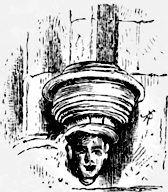Chapter XXIX: Concluding Notices
A committee was organised in 1862, chiefly through the energy of the Rev. Mr. Wilson, [5] who set themselves vigorously to the work of restoration. The unsightly galleries were taken down, the floor cleared of the accumulated rubbish of centuries, the body of the church re-seated, the derestory windows opened up, the transept walls and windows restored, and the turrets rebuilt. Men of all creeds contributed to the work, [6] and when the Abbey, on the 27th April, 1862, was re-opened for public worship, it could scarcely be recognised, so changed was it from its former condition. Since that time much has been done by the public in the way of improvement. The houses of the street which abutted upon the Abbey were one by one acquired by the Restoration Committee, and finally transferred to the Town Council of Paisley, who pulled them down. A neat railing has been placed round the churchyard, and the venerable building opened up to view. Many of the windows of the interior have also been filled with stained glass, and a costly organ has been erected by the congregation against the unsightly east wall.
Much still remains to be done to put this grand old church in a state befitting its great history. To accomplish this work is an object well worthy of the generosity of Paisley's sons. We trust the time is not far distant when the Abbey of the first Stewart will stand forth again in all its pristine beauty—with transept, and choir, and tower, as in the days of the founder. It is in this hope that the writer brings these memorials to a close. It is in this hope that he leaves the scene of eighteen years' labour, and parts from a church of which he can most truly say that its very stones are dear to him.

[5] It is impossible for me to do justice to the ability and zeal of my late revered colleague. He threw himself into the work of restoration with that energy which characterised him in all he did. I feel happy to be able to pay a tribute of affection to one with whom for seven years as minister of the same church I lived in the closest harmony and unbroken friendship.
[6] The architect in the restoration was James Salmon, Glasgow. Nothing was more striking than the feeling of “proprietorship” which the Paisley people seemed to have in the old Abbey.